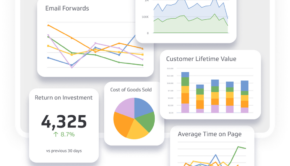4 Tips To Successfully Implement Cloud Computing Solutions
The main goal you should have as a business owner is keeping up with the latest technology. Using the latest and greatest tech tools can help you create a competitive edge. If you are looking for technology that will increase your team’s ability to collaborate, then embracing cloud computing is a good idea.
Each year, businesses based in the United States spend nearly $53 billion on cloud-based infrastructure. If you are tired of traditional onsite server-based computing, using the cloud is a great idea. With the help of a company like the WGroup, finding and implementing the right cloud-based tools will be easy.
Read below for tips on how to successfully implement cloud computing solutions.
1. Getting Your Team On Board
The first thing you need to focus on before implementing cloud-based computing solutions is getting the support of your team. Since your workers will be the ones using this technology on a daily basis, you need to make sure they are on board with these changes.
One of the biggest selling points of cloud-based programs is their ability to make remote work a real possibility. Most workers will jump at the chance to work from home on a regular basis. By letting your workers know about the convenience and power of cloud computing, you should have no problem winning them over.
2. Avoid Rushing Through the Cloud Implementation Process
One of the biggest mistakes most business owners make when it comes to using cloud-based tools is getting in a hurry during the implementation process. Ideally, a business owner will plan out this implementation process in detail. Taking your computer solutions from server-based to cloud-based overnight is nearly impossible.
Instead of trying to do everything all at once, you need to perform this implementation in stages. Not only will this help you avoid mistakes, but it will also make this process a little less overwhelming for your team. Sitting down with your team and planning out the various phases of cloud implementation is well worth the effort you invest. By getting the input of your team, you can create an implementation process that works for everyone involved.
3. Establishing a Data Backup is Vital
Collecting and using sensitive information is something most businesses do on a daily basis. When moving all of your data to the cloud, you will need to prepare for the unexpected. Establishing a cloud-based backup of all of your data can benefit your company greatly in the future.
Dealing with a network crash or even a ransomware attack can be far less stressful with one of these backups in place. One of the biggest benefits that come with using cloud-based backups is that they work automatically. This means you will not have to worry about manually backing up your data on a daily basis.
4. Finding IT Professionals to Help With This Transition
If you have a limited amount of experience with IT or cloud-based computing, working with professionals is a good idea. Trying to handle this complex transition without this professional help can lead to long-term problems.
Not only will these IT professionals help you set up your cloud network, but they can also make sure it is secured properly. Before choosing an IT professional to work with, you need to take some time to assess the level of experience. Ideally, you want to hire a company that has a vast amount of previous experience due to the results they can achieve.
The Cloud is Beneficial
Embracing new technology can be a bit intimidating at first. By persevering, you will be able to reap the benefits of cloud computing in the future.











![7 Selling Techniques for Social Media and Beyond [Infographic]](https://technofaq.org/wp-content/uploads/2017/07/7_Selling_Techniques_for_Social_Media_and_Beyond-150x150.png)






